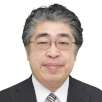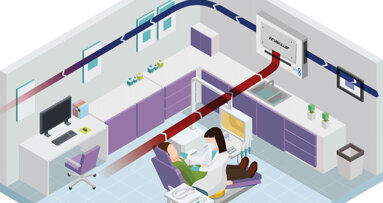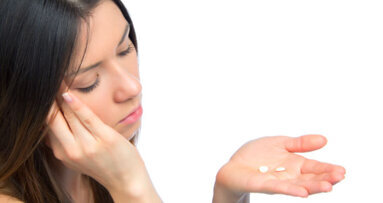The etiology and physical mechanism of fractured dental implants phenomenon have been reviewed and studied at length in recent years.1–8 For the most part, the studies concluded that the crown-to-root ratio guidelines associated with natural teeth should not be applied to a crown-to-implant restorations ratio.
According to these studies, the crown-to-implant ratios of those implants that were considered successful at the time the reviews took place were similar to those implants that failed.
Apparently, according to some of these studies, the guidelines that are used by some clinicians to establish the future prognosis of implant-supported restorations are usually empirical and lack scientific validation as far as the possible causes for implant fractures.
However, as oral implantology has been the fastest growing segment in dentistry, the gaining of insight into these failure processes, including the accurate understanding of critical anatomical, restorative and mechanical information, might stimulate the clinicians’ implementation of preventive action that may avoid the future fractures outcome with dental implants.
Case report
A 72-year-old Caucasian male recently presented to our clinic. Consistent with the patient’s chief complaint, a comprehensive oral and maxillofacial examination, including full-mouth X-rays, revealed, among other things, two fractured endosseous implants #6 and #7 (Fig. 1).
These 3.3 mm x 15 mm implants (Lifecore Biomedical, Chaska, Minn.) were placed and restored in 2003. The implants were placed as per protocol, utilizing a surgical template consisting of two guiding sleeves (DePlaque, Victor, N.Y.).
The implants were allowed to integrate for six months. No surgical complications were noted during this time. At the conclusion of the six-month waiting period, the implants were uncovered in the normal manner and healing abutments placed.
The implants were subsequently restored with implant-supported crowns that were functional for approximately six years until the implants fractured.
While this treatment option was developed with an appreciation of the patient’s occlusal and mechanical circumstances and habits, following the implants’ fracture, a retrospective analysis of the site planned for the implants revealed extended inter-occlusal space on the articulated models and widespread occlusal wear of the opposing dentition (Fig. 2).
When the patient presented recently to our clinic, the only portion of the restoration that was still present in his mouth was abutment #6, which was still connected to one of the fractured implants, and was removed with a hex driver (Fig. 3).
Proceeding with careful assessment of all the available retrospective diagnostic information and upon further discussion with the patient, several diagnostic assumptions and one follow-up treatment option were established that included replacement of the implant-supported crowns by a removable cast partial denture.
Considering the need for the removal of fractured implants must be balanced against the risk of increasing damage, a decision was made to remove the remaining abutment and the fractured piece of implant #6 allowing for primary closure of the soft tissue over the remaining implant bodies #6 and #7, i.e., “put them to sleep” (Fig. 4). This was followed by insertion of an immediate acrylic removable partial denture, and subsequently, a cast partial denture will be fabricated.
This report attempts to provide an argument in favor of the consideration of physical mechanisms as potential contributors to implant fractures.
While controversy continues to exist as to whether crown-to-root ratio can serve as an independent aid in predicting the prognosis of teeth,9 the same certainly applies to crown-to-implant ratio, unless multiple other clinical indices such as opposing occlusion, presence of parafunctional habits and material electrochemical problems, just to name a few, are considered.
Implant fractures are considered one potential problem with dental implants, especially delayed fracture of titanium dental implants due to chemical corrosion and metal fatigue.2
Following careful review of the referenced articles, which are very enlightening, we realized that to a great extent they support our theory that there are multiple factors involved in implant fractures.
These factors include magnitude, location, frequency, direction and duration of compressive, tensile and shear stresses; gender; implant location in the jaw; type of bone surrounding the implant; pivot/fulcrum point in relation to abutment connection; implant design; internal structure of the implant; length of time in the oral environment as it relates to metallurgic changes induced in titanium over time; gingival health and crown-to-implant-ratio.
Considering the multiple factors involved in implant fractures, both physical and biological, we can only assume that it can happen especially if the forces of the opposing occlusion and/or parafunctional habits are greater than the strength of the implant, especially over time.
Therefore, it is imperative that the clinician be knowledgeable about the diversity of factors before recommending dental implants. Errors in diagnosing potential contributors to implant fractures are the most common reason that dental implants fail.
Conclusion
Although, according to the literature, the use of the crown-to-implant ratio in addition to other clinical indices does not offer the best clinical predictors, and even though no definitive recommendations could be ascertained, considering that dental implants are becoming increasingly popular, an increase in the number of failures, especially due to late fractures, is to be expected.8
This report attempted to provide an argument in favor of consideration of physical mechanisms as potential predictors to implant fractures.
Therefore, it is essential for us to familiarize ourselves with the understanding, and diagnostic competence of the multiple factors involved in implant fractures. Once observed, this predictor would certainly lead to better diagnosis and treatment planning.
embedImagecenter("Imagecenter147",147);
A complete list of references is available from the publisher.
For queries about this article, please contact:
Dov M. Almog, DMD
Chief, Dental Service (160)
VA New Jersey Health Care System (VANJHCS)
385 Tremont Ave., East Orange, N.J. 07018
dov.almog@va.gov
While dentistry has been on the forefront of infection control with the sterilization of instrumentation, the proper surface disinfection of surfaces, the ...
After three decades practicing orthodontics, including experience with the “muscle-centric” philosophy of orofacial development, I was recently ...
NEW YORK, N.Y., USA: With your reputation on the line with every procedure, knowing exactly what instruments and materials you’re using on your ...
Dr Malene Hallund is an esteemed oral and maxillofacial surgeon and the visionary owner of the NORD advanced dentistry and oral surgery practice in ...
Implant dentistry is an expanding field. Ensure your skills are strengthened and that you can manage every appropriate phase of your implant care through a ...
LOMA LINDA, Calif., USA: The indications and versatility of dental implants have increased, and so have complications. Researchers from the Loma Linda ...
NEW YORK, N.Y., USA: Dental problems can make individuals self-conscious about their appearance. Someone’s face is nearly always visible, and a ...
NEW YORK CITY, N.Y., USA: The results of a study conducted at the New York University College of Dentistry seem to confirm the hypothesis that the use of ...
NEW YORK CITY, N.Y., USA: Results derived from a study conducted at the University of New York College of Dentistry seem to confirm the assumption that the ...
NEW ORLEANS, La., USA: At this year’s AAO Annual Meeting, Ormco Corp. offered what had to be one of the liveliest — and funniest — booth ...
Live webinar
Wed. 14 January 2026
12:00 PM EST (New York)
Dr. Théo Laplane, Dr. Robert Gottlander DDS
Live webinar
Fri. 16 January 2026
12:00 PM EST (New York)
Live webinar
Mon. 19 January 2026
1:00 PM EST (New York)
Philipp Kopp, Michael Seeber
Live webinar
Thu. 22 January 2026
9:00 AM EST (New York)
Prof. Judith Jones D.D.S; M.P.H., Prof. Kakuhiro Fukai D.D.S., Ph.D, Dr. Bathsheba (Bethy) Turton
Live webinar
Thu. 22 January 2026
2:00 PM EST (New York)
Dr. Nicola M. Grande DDS, PhD
Live webinar
Wed. 28 January 2026
8:00 AM EST (New York)
Live webinar
Wed. 28 January 2026
11:00 AM EST (New York)
Prof. Dr. Jan-Frederik Güth



 Austria / Österreich
Austria / Österreich
 Bosnia and Herzegovina / Босна и Херцеговина
Bosnia and Herzegovina / Босна и Херцеговина
 Bulgaria / България
Bulgaria / България
 Croatia / Hrvatska
Croatia / Hrvatska
 Czech Republic & Slovakia / Česká republika & Slovensko
Czech Republic & Slovakia / Česká republika & Slovensko
 France / France
France / France
 Germany / Deutschland
Germany / Deutschland
 Greece / ΕΛΛΑΔΑ
Greece / ΕΛΛΑΔΑ
 Hungary / Hungary
Hungary / Hungary
 Italy / Italia
Italy / Italia
 Netherlands / Nederland
Netherlands / Nederland
 Nordic / Nordic
Nordic / Nordic
 Poland / Polska
Poland / Polska
 Portugal / Portugal
Portugal / Portugal
 Romania & Moldova / România & Moldova
Romania & Moldova / România & Moldova
 Slovenia / Slovenija
Slovenia / Slovenija
 Serbia & Montenegro / Србија и Црна Гора
Serbia & Montenegro / Србија и Црна Гора
 Spain / España
Spain / España
 Switzerland / Schweiz
Switzerland / Schweiz
 Turkey / Türkiye
Turkey / Türkiye
 UK & Ireland / UK & Ireland
UK & Ireland / UK & Ireland
 International / International
International / International
 Brazil / Brasil
Brazil / Brasil
 Canada / Canada
Canada / Canada
 Latin America / Latinoamérica
Latin America / Latinoamérica
 China / 中国
China / 中国
 India / भारत गणराज्य
India / भारत गणराज्य
 Pakistan / Pākistān
Pakistan / Pākistān
 Vietnam / Việt Nam
Vietnam / Việt Nam
 ASEAN / ASEAN
ASEAN / ASEAN
 Israel / מְדִינַת יִשְׂרָאֵל
Israel / מְדִינַת יִשְׂרָאֵל
 Algeria, Morocco & Tunisia / الجزائر والمغرب وتونس
Algeria, Morocco & Tunisia / الجزائر والمغرب وتونس
 Middle East / Middle East
Middle East / Middle East





























































To post a reply please login or register